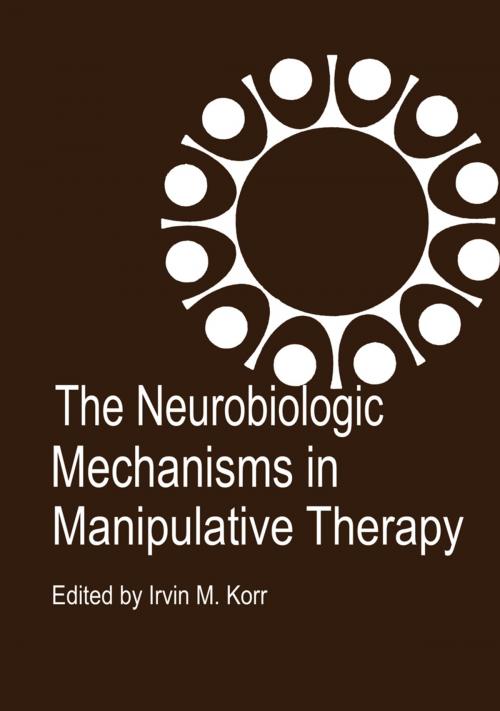The Neurobiologic Mechanisms in Manipulative Therapy
Nonfiction, Health & Well Being, Medical, Surgery, Neurosurgery, Specialties, Internal Medicine, Neurology| Author: | ISBN: | 9781468489026 | |
| Publisher: | Springer US | Publication: | December 6, 2012 |
| Imprint: | Springer | Language: | English |
| Author: | |
| ISBN: | 9781468489026 |
| Publisher: | Springer US |
| Publication: | December 6, 2012 |
| Imprint: | Springer |
| Language: | English |
At the request of a Subcommittee of the United States Senate, in February, 1975, the National Institute of Neurological Disorders and Stroke (now the National Institute of Neurological and Communi cative Disorders and Stroke) conducted a Workshop on the Research Status of Spinal Manipulative Therapy. The Workshop was held in response to the Senate Subcommittee's request for an "independent unbiased study of the fundamentals of the chiropractic profession. " Since spinal manipulative therapy is a key tenet of chiropractic, the Institute felt a research workshop focused on that issue would provide a useful base upon which to examine the broad concept of the role of biomechanical alterations of the spine in health and disease. This would include the pathophysiologic and clinical hypotheses formulated by medical and osteopathic physicians as w~ll as chiropractors. Why the relatively sudden interest of the Senate Subcommittee in chiropractic? There were probably many reasons for that interest, but suffice to say anticipation of discussion on the role of chiro practic in any national system of health insurance could in itself have provided adequate stimulus for the request. In any case, the NINCDS was asked to review what was and what was not known about the fundamentals of chiropractic. I stress "fundamentals" since as a research organization, the NINCDS is not charged with review ing matters such as clinical education, licensure or clinical prac tice. A small expert committee of scientific consultants helped the Institute design the format and agenda for the Workshop.
At the request of a Subcommittee of the United States Senate, in February, 1975, the National Institute of Neurological Disorders and Stroke (now the National Institute of Neurological and Communi cative Disorders and Stroke) conducted a Workshop on the Research Status of Spinal Manipulative Therapy. The Workshop was held in response to the Senate Subcommittee's request for an "independent unbiased study of the fundamentals of the chiropractic profession. " Since spinal manipulative therapy is a key tenet of chiropractic, the Institute felt a research workshop focused on that issue would provide a useful base upon which to examine the broad concept of the role of biomechanical alterations of the spine in health and disease. This would include the pathophysiologic and clinical hypotheses formulated by medical and osteopathic physicians as w~ll as chiropractors. Why the relatively sudden interest of the Senate Subcommittee in chiropractic? There were probably many reasons for that interest, but suffice to say anticipation of discussion on the role of chiro practic in any national system of health insurance could in itself have provided adequate stimulus for the request. In any case, the NINCDS was asked to review what was and what was not known about the fundamentals of chiropractic. I stress "fundamentals" since as a research organization, the NINCDS is not charged with review ing matters such as clinical education, licensure or clinical prac tice. A small expert committee of scientific consultants helped the Institute design the format and agenda for the Workshop.















